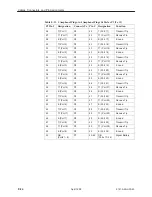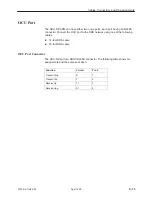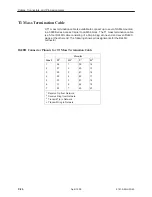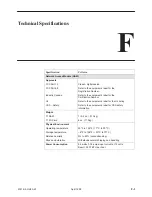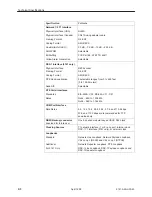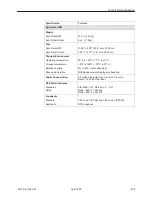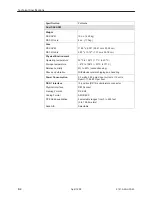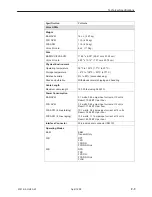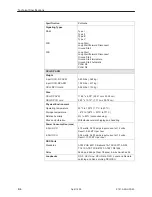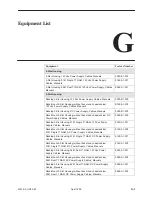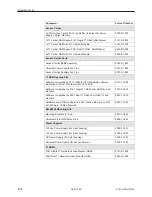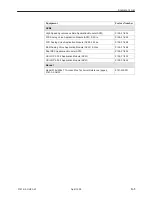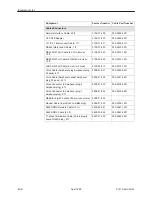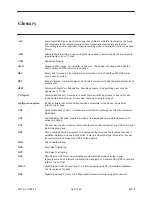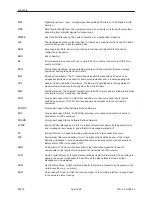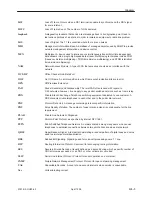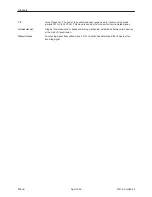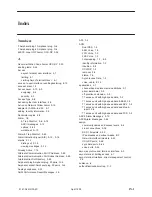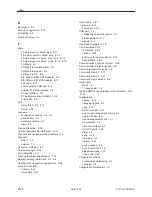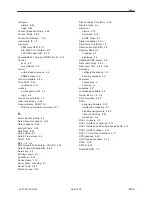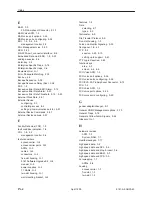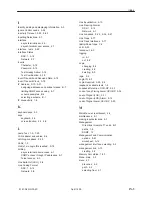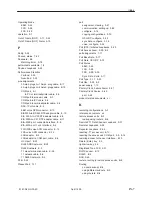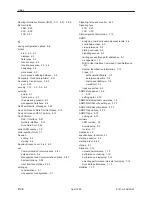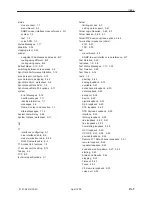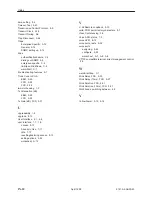
Glossary
GL-2
9161-A2-GH30-40
April 1999
Digital Signal level 1 (one). A digital signal transmitted at the rate of 1.544 Mbps in North
America.
Data Terminal Equipment. The equipment, such as a computer or terminal, that provides
data in the form of digital signals for transmission.
Dual Tone Multifrequency. The basis of operation for a pushbutton telephone.
The transmission standard that specifies 12 frames as a superframe that is used for frame
synchronization and to locate signaling bits.
Excessive Error Rate. An error rate that is greater than the threshold that has been
configured in the device.
End of Number.
Errored second. A second with one or more ESF error events (one or more CRC6 error
events or OOFs).
ElectroStatic discharge. An undesirable discharge of static electricity that can damage
equipment and degrade electrical circuitry.
Extended Superframe. The T1 transmission standard that specifies 24 frames as an
extended superframe to be used for frame synchronization and to locate signaling bits.
Federal Communications Commission. The Board of Commissioners that regulates all
electrical communications that originate in the United States.
Facility Data Link. The selected framing bits in the ESF format used in a wide-area link that
are used for control, monitoring, and testing.
Foreign Exchange Office. An APM that extends voice channel connectivity to remote
switching equipment. The FXO interface appears as a telephone to the connecting
equipment.
Foreign Exchange Office Software-Defined Network.
Foreign Exchange Station. An APM that provides voice channel connectivity directly to
handsets or to PBX equipment.
Foreign Exchange Station Software-Defined Network.
Internet Control Management Protocol. Internet protocol that allows for the generation of
error messages, tests packets, and information messages related to IP.
Internet Protocol. An open networking protocol used for internet packet delivery.
I
nternational Telecommunication Union. The telecommunications agency of the United
Nations, established to provide standardized communications procedures and practices.
Before March 1993 it was called CCITT.
Line Build-out. The amount of attenuation of the transmitted signal that is used to
compensate for the length of wire between the transmitter and the receiver.
Liquid Crystal Display. Thin glass plates containing liquid crystal material. When voltage is
applied, the amount of light able to pass through the glass plates is altered so that
messages can be displayed.
Light Emitting Diode. A light or status indicator that glows in response to the presence of a
certain condition (e.g., an alarm).
Line Loopback. A test in which the received signal on the network interface is looped back
to the network without change.
DS1
DTE
DTMF
D4
EER
EON
ES
ESD
ESF
FCC
FDL
FXO
FXODN
FXS
FXSDN
ICMP
IP
ITU
LBO
LCD
LED
LLB
Summary of Contents for 9161 Single T1
Page 1: ...MODEL 916x 926x T1 ACCESS MUX TECHNICAL REFERENCE Document No 9161 A2 GH30 40 April 1999...
Page 34: ...Management and Control 2 6 9161 A2 GH30 40 April 1999 This page intentionally left blank...
Page 54: ...User Interface 4 10 9161 A2 GH30 40 April 1999 This page intentionally left blank...
Page 92: ...Setting Up 5 38 9161 A2 GH30 40 April 1999 Example Channel Allocation...
Page 142: ...Security 6 10 9161 A2 GH30 40 April 1999 This page intentionally left blank...
Page 252: ...IP Addressing B 8 9161 A2 GH30 40 April 1999 This page intentionally left blank...

